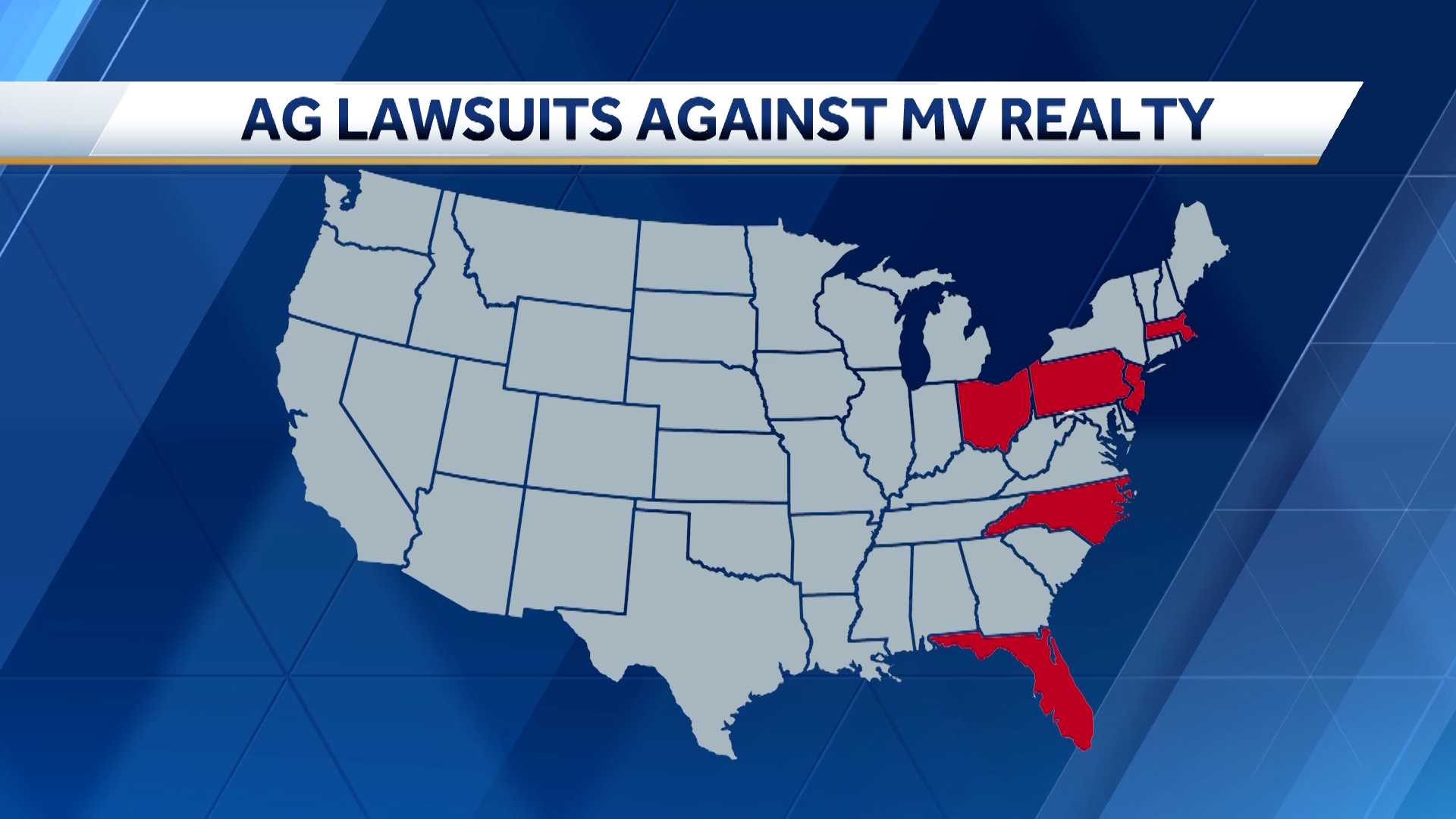Breaking - NAR Lawsuit - Fannie Mae Update In the dynamic world of…
VA Disability Pay
Navigating the financial implications of a disability can be a perplexing and stressful endeavor, particularly when changes occur. How can one stay abreast of these fluctuations, ensuring they’re receiving the fair support they’re entitled to?
Knowledge is power.
Understanding the latest VA Disability Pay Charts for 2024 is the first step in gaining control. With updated compensation rates, veterans can plan their finances with greater precision and confidence.
Understanding 2024 VA Disability Pay Increases
The 2024 VA Disability Pay Charts reflect a consequential 3.2% Cost of Living Adjustment (COLA), a pivotal factor that directly enhances monthly and annual compensation for our revered veterans. This boost in benefits, effective as of December 1, 2023, is more than just a bureaucratic update—it’s an acknowledgment of the ever-evolving economic landscape and a measure of support to those who’ve served. As recipients review these charts, it’s vital to understand that this increase is engineered to maintain the purchasing power of their benefits, ensuring that the compensation keeps pace with inflation, thus safeguarding their financial stability.
Significance of the 3.2% COLA Adjustment
The 2023 COLA increase signifies more than just additional dollars—it represents a timely financial uplift for veterans facing inflationary pressures.
Veterans’ compensation is explicitly adjusted to support their economic stability amid the cost-of-living fluctuations.
This 3.2% increase directly correlates to inflation, ensuring veterans’ benefits remain aligned with current economic conditions, preserving their purchasing power, and providing a sense of security.
Understanding the gravity of COLA reflects recognition of the sacrifices veterans have made, matching their benefits to the cost of living—ensuring they receive the respect and dignity they deserve.
Monthly and Annual Compensation Breakdown
VA disability rates for 2024 are adjusted with a 3.2% increase based on the COLA, impacting monthly and annual payouts.
- 10% Disability Rating: Monthly Compensation $171.23, Annual Compensation $2,054.76
- 20% Disability Rating: Monthly Compensation $338.49, Annual Compensation $4,061.88
- 30% Disability Rating: Monthly Compensation $524.31, Annual Compensation $6,291.72
- 40% Disability Rating: Monthly Compensation $755.28, Annual Compensation $9,063.36
- 50% Disability Rating: Monthly Compensation $1,075.16, Annual Compensation $12,901.92
- 60% Disability Rating: Monthly Compensation $1,361.88, Annual Compensation $16,342.56
- 70% Disability Rating: Monthly Compensation $1,716.28, Annual Compensation $20,595.36
- 80% Disability Rating: Monthly Compensation $1,995.01, Annual Compensation $23,940.12
- 90% Disability Rating: Monthly Compensation $2,241.91, Annual Compensation $26,902.92
- 100% Disability Rating: Monthly Compensation $3,737.85, Annual Compensation $44,854.20
This compensation supports the cost of living for veterans, recognizing their service and sacrifice.
It’s imperative to understand these figures may change with the presence of dependents and other factors.
Calculating Added Amounts for Aid and Attendance and Additional Children
Veterans with a 30% or greater disability rating may receive additional compensation for dependent children or a spouse receiving Aid and Attendance benefits. To calculate additional compensation, use the respective “additional” rows at the end of each table.
For example, a Veteran with a 30% disability rating, a spouse and three children under 18 would receive $693.64 each month. $631.64 (Veteran with Spouse and Child) + $31 (additional child 1) + $31 (additional child 2).
2024 Pay Rates for 30% – 60% Disability Rating
| Dependent Status | 30% Disability Rating | 40% Disability Rating | 50% Disability Rating | 60% Disability Rating |
|---|---|---|---|---|
| Veteran (No Dependents) | $524.31 | $755.28 | $1,075.16 | $1,361.88 |
| Veteran with Spouse (No Dependents) | $586.31 | $838.28 | $1,179.16 | $1,486.88 |
| Veteran with Spouse and 1 Child | $632.31 | $899.28 | $1,255.16 | $1,577.88 |
| Veteran with 1 Child | $565.31 | $810.28 | $1,144.16 | $1,444.88 |
| Veteran with 1 Parent | $574.31 | $821.28 | $1,158.16 | $1,461.88 |
| Veteran with 2 Parents | $624.31 | $887.28 | $1,241.16 | $1,561.88 |
| Veteran with 1 Parent and 1 Child | $615.31 | $876.28 | $1,227.16 | $1,544.88 |
| Veteran with 2 Parents and 1 Child | $665.31 | $942.28 | $1,310.16 | $1,644.88 |
| Veteran with Spouse and 1 Parent | $636.31 | $904.28 | $1,262.16 | $1,586.88 |
| Veteran with Spouse and 2 Parents | $686.31 | $970.28 | $1,345.16 | $1,686.88 |
| Veteran with Spouse, 1 Parent and 1 Child | $682.31 | $965.28 | $1,338.16 | $1,677.88 |
| Veteran with Spouse, 2 Parents and 1 Child | $732.31 | $1,031.28 | $1,421.16 | $1,777.88 |
| Each Additional Child Under 18 | $31 | $41 | $51 | $62 |
| Each Additional Schoolchild Over Age 18 in School | $100 | $133 | $167 | $200 |
| Additional for Spouse on Aid and Attendance | $57 | $76 | $95 | $114 |
2024 Pay Rates for 70% – 100% Disability Rating
| Dependent Status | 70% Disability Rating | 80% Disability Rating | 90% Disability Rating | 100% Disability Rating |
|---|---|---|---|---|
| Veteran (No Dependents) | $1,716.28 | $1,995.01 | $2,241.91 | $3,737.85 |
| Veteran with Spouse (No Dependents) | $1,861.28 | $2,161.01 | $2,428.91 | $3,946.25 |
| Veteran with Spouse and 1 Child | $1,968.28 | $2,283.01 | $2,565.91 | $4,098.87 |
| Veteran with 1 Child | $1,813.28 | $2,106.01 | $2,366.91 | $3,877.22 |
| Veteran with 1 Parent | $1,833.28 | $2,128.01 | $2,391.91 | $3,905.11 |
| Veteran with 2 Parents | $1,950.28 | $2,261.01 | $2,541.91 | $4,072.37 |
| Veteran with 1 Parent and 1 Child | $1,930.28 | $2,239.01 | $2,516.91 | $4,044.48 |
| Veteran with 2 Parents and 1 Child | $2,047.28 | $2,372.01 | $2,666.91 | $4,211.74 |
| Veteran with Spouse and 1 Parent | $1,978.28 | $2,294.01 | $2,578.91 | $4,113.51 |
| Veteran with Spouse and 2 Parents | $2,095.28 | $2,427.01 | $2,728.91 | $4,280.77 |
| Veteran with Spouse, 1 Parent and 1 Child | $2,085.28 | $2,416.01 | $2,715.91 | $4,266.13 |
| Veteran with Spouse, 2 Parents and 1 Child | $2,202.28 | $2,549.01 | $2,865.91 | $4,433.39 |
| Each Additional Child Under 18 | $72 | $82 | $93 | $103.55 |
| Each Additional Schoolchild Over Age 18 in School | $234 | $267 | $301 | $334.49 |
| Additional for Spouse on Aid and Attendance | $134 | $153 | $172 | $191.14 |
Historic VA Disability Pay Increases
VA disability pay increased by 3.2% in 2024. See the table below to compare these changes from 1976 to today.
| VA Disability % | Effective Date | VA Disability % | Effective Date |
| 3.20% | Dec. 1 2023 | 2.10% | Dec. 1, 1997 |
| 8.70% | Dec. 1, 2022 | 2.90% | Dec. 1, 1996 |
| 5.90% | Dec. 1, 2021 | 2.60% | Dec. 1, 1995 |
| 1.30% | Dec. 1, 2020 | 2.80% | Dec. 1, 1994 |
| 1.60% | Dec. 1, 2019 | 2.60% | Dec. 1, 1993 |
| 2.80% | Dec. 1, 2018 | 3.00% | Dec. 1, 1992 |
| 2.00% | Dec. 1, 2017 | 3.70% | Dec. 1, 1991 |
| 0.30% | Dec. 1, 2016 | 5.40% | Dec. 1, 1990 |
| 0.00% | Dec. 1, 2015 | 4.70% | Dec. 1, 1989 |
| 1.70% | Dec. 1, 2014 | 4.00% | Dec. 1, 1988 |
| 1.50% | Dec. 1, 2013 | 4.20% | Dec. 1, 1987 |
| 1.70% | Dec. 1, 2012 | 1.30% | Dec. 1, 1986 |
| 3.60% | Dec. 1, 2011 | 3.10% | Dec. 1, 1985 |
| 0.00% | Dec. 1, 2010 | 3.50% | Dec. 1, 1984 |
| 0.00% | Dec. 1, 2009 | 3.50% | Dec. 1, 1983 |
| 5.80% | Dec. 1, 2008 | 7.40% | Oct. 1, 1982 |
| 2.30% | Dec. 1, 2007 | 11.20% | June 1, 1981 |
| 3.30% | Dec. 1, 2006 | 14.30% | June 1, 1981 |
| 4.10% | Dec. 1, 2005 | 9.90% | June 1, 1979 |
| 2.70% | Dec. 1, 2004 | 6.50% | Jan. 1, 1979 |
| 2.10% | Dec. 1, 2003 | 5.90% | Oct. 1, 1978 |
| 1.40% | Dec. 1, 2002 | 6.40% | Oct. 1, 1977 |
| 2.60% | Dec. 1, 2001 | 8.00% | Oct. 1, 1976 |
| 3.50% | Dec. 1, 2000 |
Detailed 2024 VA Disability Rate Tables
Understanding the VA disability rate tables is crucial for veterans seeking compensation. In 2024, monthly payments range from $171.23 for a 10% disability rating to $3,737.85 for a 100% rating.
Compensation levels are finely adjusted for varying degrees of disability, offering higher monthly benefits to those with more severe service-connected conditions. Additionally, the presence of dependents and specific situations like Aid and Attendance may increase these amounts significantly.
For a veteran without dependents, a 30% rating equates to a monthly sum of $524.31, yet with dependents, this number changes. It is essential for veterans to explore how their unique circumstances affect their compensation.
Compensation Rates for Ratings 10% – 20%
For veterans with a 10% disability rating, the 2024 VA compensation rate is set at $171.23 monthly. This figure reflects the 3.2% cost-of-living adjustment (COLA) for the coming year.
20% rated veterans receive $338.49 per month. Both rates come into effect on December 1, 2023.
While these rates apply to those without dependents, it’s important to acknowledge that these classifications don’t trigger additional compensation for families.
Increments between the 10% and 20% rating levels are designed to acknowledge the gradation in disability severity. Every percentage point increase represents a tangible difference in compensation received, mirroring the increased challenges a veteran may face.
For this lower bracket of disability ratings, no extra funds are allocated for having a spouse, child, or dependent parent. It is for individuals managing mild service-connected conditions independently.
Higher compensations underscore the system’s acknowledgement that increased disability levels often entail greater financial needs. Yet, within this 10%-20% category, such escalations in payouts are not recognized.
Expanded Rates for Ratings 30% – 60%
For veterans with a disability rating between 30% and 60%, compensation expands to include dependents.
- 30% Disability Rating: The monthly pay begins at $524.31 for the veteran alone, incrementally increasing with the addition of dependents, spouse, and children.
- 40% Disability Rating: Starts at $755.28 for a single veteran and rises with each family member included.
- 50% Disability Rating: Veteran with no dependents starts at $1,075.16, with increases applicable for each dependent.
- 60% Disability Rating: A single veteran starts at $1,361.88; adding dependents yields higher monthly compensation.
The Department of Veterans Affairs recognizes the need for added support as disabilities become more impactful.
Adding dependents like a spouse or children can considerably augment a veteran’s monthly payout, reflecting the increased cost of care.
Higher Rates for 70% – 100% Disability
The VA appreciates the heightened challenges faced by veterans with higher disability ratings.
Veterans with a disability rating from 70% to 100% see substantially increased rates, an acknowledgment of the increased severity of their conditions. For a single veteran rated at 70%, the baseline monthly compensation starts at an impactful $1,716.28, providing substantial support for more severe disabilities. As these disabilities intensify, so does the compensation; those with a full 100% disability rating receive $3,737.85 monthly—a significant acknowledgment of their sacrifice and the profound impact on their lives.
This tiered structure is designed to address the escalating needs that come with more serious conditions. Veterans facing such adversity often require additional care and resources, which is mirrored by these higher compensation rates. The VA offers these elevated payments with the intent to ease the financial burdens that often accompany more disabling conditions, enabling veterans to focus more on their health and well-being.
Ultimately, the VA strives to ensure veterans with the most serious disabilities are afforded the necessary financial security. Apart from the base rate for an unaccompanied veteran, the addition of dependents or a spouse who requires Aid and Attendance brings further increments to the monthly payments. These adjustments recognize that severe disabilities can affect an entire family’s dynamics, necessitating additional resources to sustain a suitable standard of living.
Additional Compensation Considerations
When evaluating the compensation rate charts, consider potential special monthly compensation (SMC) entitlements for conditions requiring additional aid. These are supplementary benefits over the standard disability payments, designed to address unique or more severe healthcare needs.
In addition to the base rates, veterans with certain disabilities may qualify for Special Adaptive Housing (SAH) grants or Special Vehicle Adaptation (SVA) grants. Such grants are intended to alleviate the cost of making a home or vehicle accessible, enhancing a veteran’s quality of life.
Lastly, keep in mind that VA disability compensation is a tax-free benefit. This means the compensation you receive will not be reduced by federal or state income taxes, ensuring the full financial support reflects in your take-home amount.
Accounting for Dependents and Spouses
When veterans with dependents consider their compensation, the additional amounts for spouses, children, or dependent parents directly influence the financial support they receive. Such increments can significantly alleviate the household’s fiscal responsibilities, making a meaningful impact on their overall well-being.
VA compensation rates adjust for additional dependents. Dependency considerations fundamentally change monthly payments, reflecting the veteran’s household size.
Importantly, dependency rates increase at higher disability percentages, rewarding more substantial family units for their increased living costs.
For those with special circumstances, such as a spouse requiring Aid and Attendance, this compensation further adjusts. These provisions ensure that veterans with higher-needs dependents can access additional resources vital for care.
Navigating these nuances requires precision and awareness, particularly as the number of dependents rises. Strategically planning for these factors can profoundly affect a family’s financial stability and the quality of life for all members within the veteran’s care.
Lastly, the considerations for dependents underscore the VA’s recognition of the broader impact of a veteran’s service on their immediate family. It’s a tangible acknowledgment that service-connected disabilities extend beyond the individual, affecting those they hold dear.
Additional Benefits for Aid and Attendance
Veterans with dependents in need of aid and assistance may qualify for additional funds. These benefits cater specifically to spouses who require more intensive personal care.
The aid can vastly improve a household’s care quality. It provides financial relief directly associated with caregiving expenses.
To be eligible, a spouse must demonstrate a daily dependency on another for personal functions. These activities include bathing, dressing, and other essential self-care practices that ensure well-being.
For veterans and families navigating the complexities of Aid and Attendance benefits, the added support can be a lifeline. It compensates for the necessary higher levels of care that come with an elevated need for assistance. Notably, this benefit is over and above the standard disability compensation and, if required, is listed as “additional” when determining overall VA benefits.
Historical Context of VA Pay Rates
The evolution of VA Disability Pay Rates has been influenced by various economic factors over the decades. In response to inflation and living cost changes, adjustments to VA compensation are made annually.
Since 1976, VA Disability Pay Rates have seen gradual increments reflecting the need to maintain veterans’ purchasing power. These adjustments are known as Cost of Living Adjustments (COLA) and are essential for veterans’ financial stability.
COLA changes are a critical aspect of VA benefits, ensuring veterans’ compensation keeps pace with the economy. This indexation safeguards veterans’ quality of life amid fluctuating economic conditions.
Tracing VA Disability Pay Trends Since 1976
The VA disability pay structure has evolved over time, reflecting economic shifts and living cost changes.
- 1976: The introduction of annual Cost of Living Adjustments (COLA) begins to ensure VA benefits keep pace with inflation.
- 1981 – 1984: Significantly high COLA increments occur, reflecting the high inflation rates of the early ’80s.
- 2000s: More moderate COLA increases reflect steadier economic conditions and lower inflation rates.
- 2010 – 2011: Two years of zero COLA adjustments reflect the post-recession economic environment.
- 2024: A 3.2% COLA increase is applied, continuing the trend of annual adjustments for inflation.
The varying COLA rates over the years highlight the economic fluctuations veterans have navigated.
These trends underscore the VA’s commitment to adjust disability compensation in relation to the cost of living.
Comparing Recent Year-to-Year Adjustments
The VA’s adaptation to economic changes is evident in recent COLA adjustments.
Starting in 2014, there was a period of modest COLA increases, signifying a gradually improving economy. These adjustments were crucial for veterans to maintain their purchasing power.
However, 2015 and 2016 brought a halt to this trend with notably stagnant COLA rates. This stagnancy was unusual and reflected broader economic factors that impacted inflation measures.
The years following witnessed a rebound in COLA rates, with 2018 marking a 2.8% increase. This uptick exemplified the economic recovery, providing veterans with additional financial relief.
In 2024, a 3.2% COLA adjustment reflects sustained economic growth and inflation trends, continuing the VA’s responsiveness to cost of living variations.



